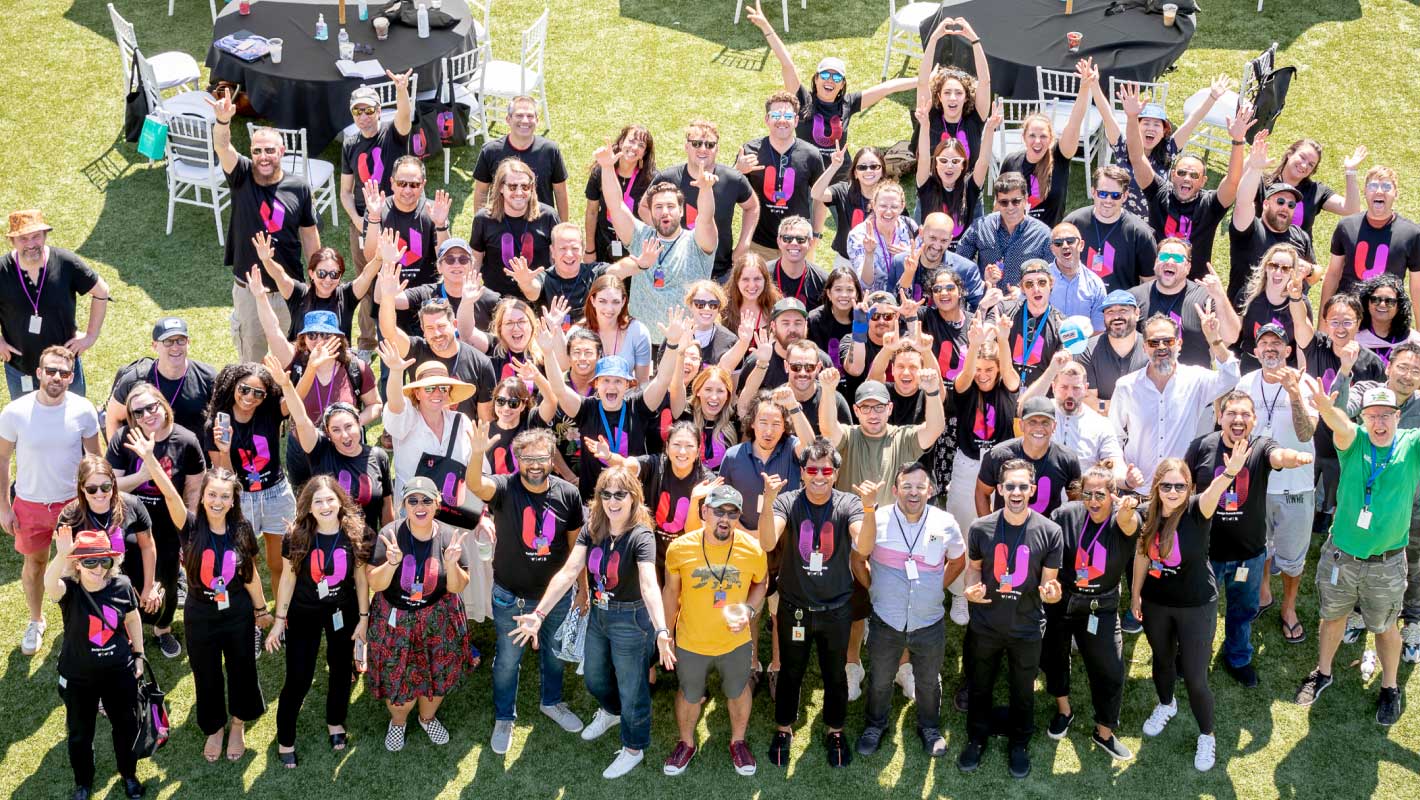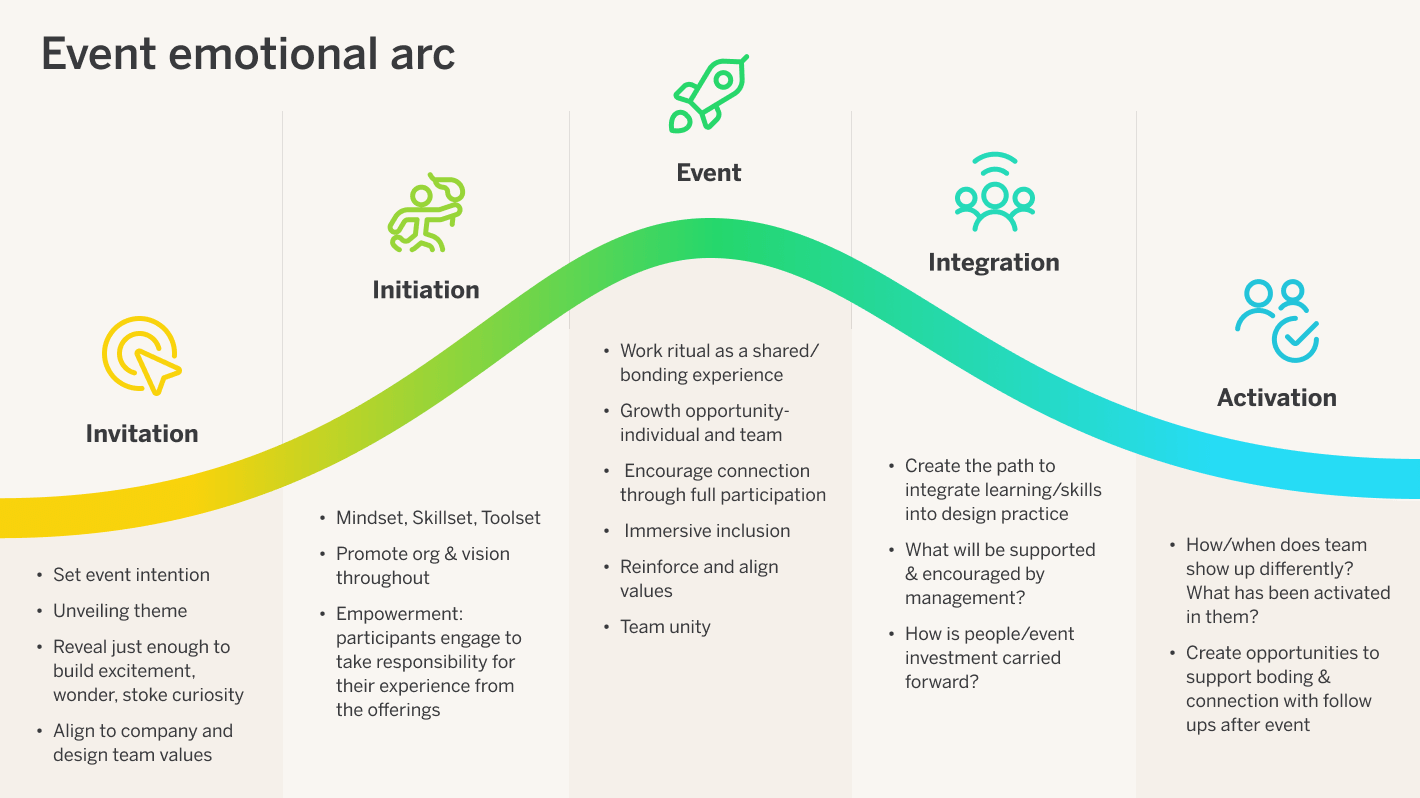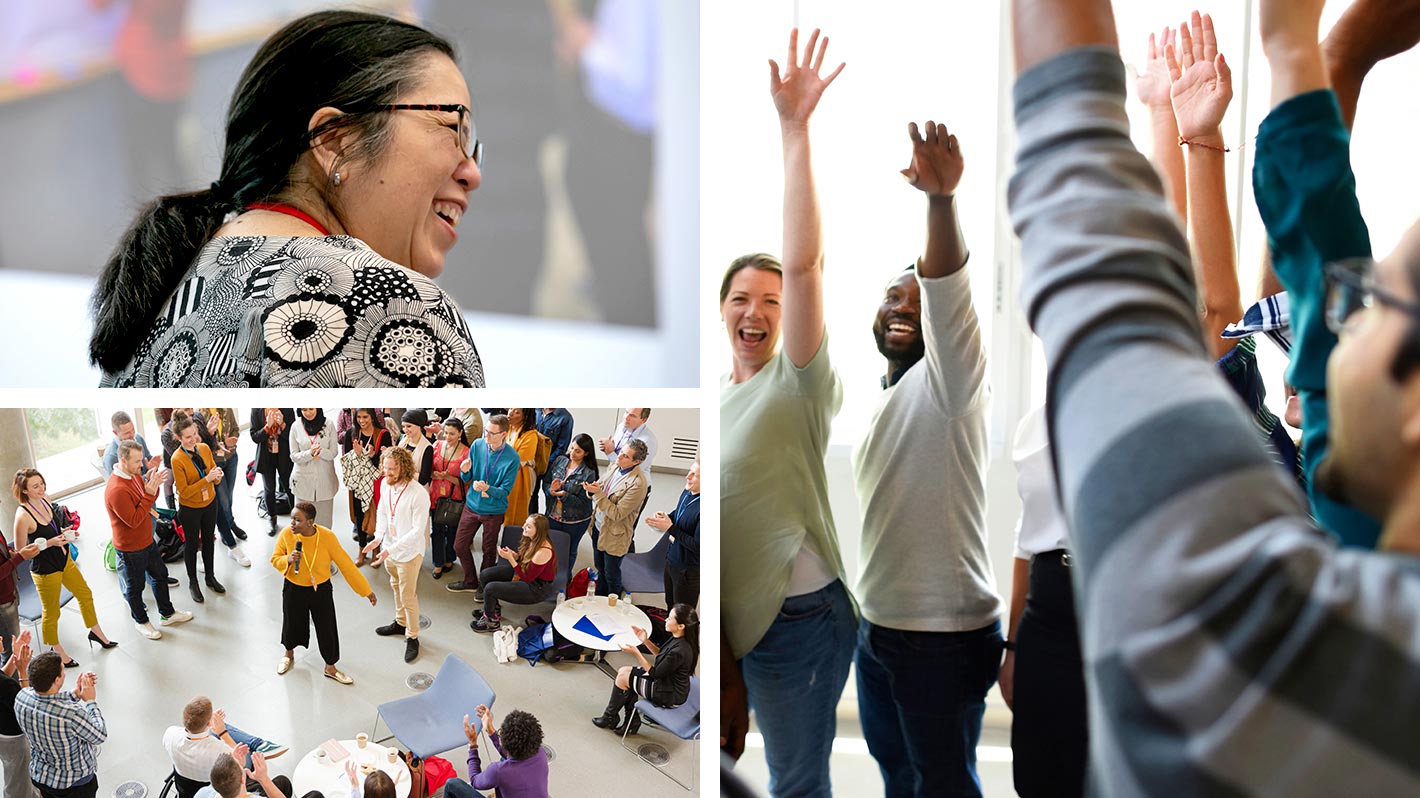I’ve always loved bringing people together. One of my passions is to design events and experiences that delight and inspire. Whether impromptu game nights with friends or eLearning courses for Fortune 100 companies, every experience has the power to create a sense of connection.
As a content strategist, I’ve started approaching events like any other piece of content. That is, strategically finding ways to deliver a holistic experience that is served to the right audience, at the right time and in the right way, that meets users’ needs and achieves business objectives.
I’ve worked on training programs, developed workshops, led presentations at conferences, been a stage manager, produced Zoom retreats, webinars, and Youtube concerts, and most recently managed a design summit for Bill.com’s internal design team (and much more). Through working on so many different types of events in so many different kinds of roles, I’ve learned three keys to creating an optimal experience for participants, and I wanted to share those with you.
The difference between event planning and event experience design
Before I dive into the lessons I’ve learned, let’s talk about the difference between event planning and event experience design.
Event planning can incorporate event experience design, and vice versa, but there are different functions and approaches to each discipline.
There are many opinions on the differences, but at the highest level I see event planning as managing the logistics (what is happening), and event experience design as crafting the experience (how people are feeling).
As an event experience designer, I focus on the user, their needs, and their end-to-end experience of the event. As an event planner, I focus on booking vendors, ensuring contracts are signed and that we have the right paperwork for the venue.
Both of these roles need to plan what participants do, what activities they engage with, and how the experience comes together as a whole, but experience design starts from the emotional and moves to the practical. These two positions are often blended and divided differently depending on the event, but they are two distinct disciplines.
Lessons learned
In the effort to design immersive experiences for attendees, some of the greatest successes I’ve found are in the following areas.
1. Understand your audience
Before anything else, I need to understand my audience. Who are they to each other? Why are they there? What are their needs, motivations, and expectations? I can only design the best experience if I understand my audience. Some ways to find out what the audience wants are through 1:1 interviews or surveys, or by hosting a workshop with experts on the audience.
The goal is to have empathy for my users and to understand them deeply. There are many excellent tools available for gaining empathy for your users. At Tangible, we like to start by building provisional personas.

By learning to think and feel like my audience, I can ensure that every aspect of the experience wows them.
2. Business as usual is not enough these days
Covid and social shifts have created unprecedented changes in how we gather. Audiences have become used to watching bite-sized pieces of content (no more boring presentations!) Accessible movement is essential to keeping folks engaged. Diversity and accessibility are a must, not a nice-to-have (and let’s be honest, they always were a must).
I recently co-designed a design summit for Bill.com’s design team. We made sure that accessibility and diversity were part of the planning from the ground up, not something we tacked on at the end. With the expert advice of one of their internal designers that has DEI (Diversity, Equity, and Inclusion) training, we found ways big and small to make everyone at the event feel included and engaged.

Here’s some ways we achieved this:
- We started the first day with a land acknowledgement
- We announced where the gender neutral bathrooms were located
- We paid special attention to include a diverse group of workshop leaders
- We started every day with gentle yoga and meditation with modifications built into the instruction so everyone could participate
- We made sure that every session was under 1 hour, or if they were longer, we had a 10 minute break after 45-60 minutes
- We asked people their dietary needs before planning the menu
- We ensured that workshops and keynotes had an interactive component to them
- And much more!
There are many ways to make sure everyone feels included—this guide from global inclusion experts RW3 CultureWizard is a great place to start.
3. The experience doesn’t begin or end with the event itself
From invites to the post-event survey, from the meals to the social events, every touchpoint is part of the experience. I work with key stakeholders to hone into what the event goals are and map to how they can be achieved in every aspect.

I strive to ensure everyone involved understands the user, the goals, and the logistics. If my event includes breakouts, I make sure that workshop leaders understand the main takeaways everyone should experience and where to go next.
Best practices:
- Create a deck that reviews goals, expected outcomes and general logistics. Walk everyone through that deck to ensure a consistent experience.
- The MC can do more than just logistics. Yes, they introduce the upcoming segment or thank the speakers for their time, but if used right, the MC can be the thread that ties the entire event together.
- I like to incorporate planning for the next event into the current event. I use a survey after the event to gather feedback and quantify success, but I also often ask questions about what type of content participants would like to see in the future. I get to brainstorm my next event with my participants!
It’s all about connection

Ultimately, the best part of creating experiences is the connection between people it can bring, and for businesses running events, the investment in connection can really pay off. 95% of HR professionals agree that investing in employee connection at work helps drive employee retention. (Source: 2021 Blueboard Connected Workplace Survey). And with most large organizations incorporating remote and hybrid work models into their cultures, creating connection is more important than ever. Corporate events done right can be a powerful tool to create that sense of connection.
My passion for creating experiences has turned into some of my favorite work. I get to support clients and businesses in doing the most important thing they do: connecting with their audiences on an emotional level through experiences.

Looking for a partner?
Tangible crafts unique experiences and events that will meet your goals (and often exceed them). We are teachers, facilitators, strategists and coaches. We have built innovation programs for some of the largest corporations in the world and have taught and coached at Stanford University and the d-school. We know how to dive deep into your audience’s needs and create something that will inspire, delight and maybe even change them.

